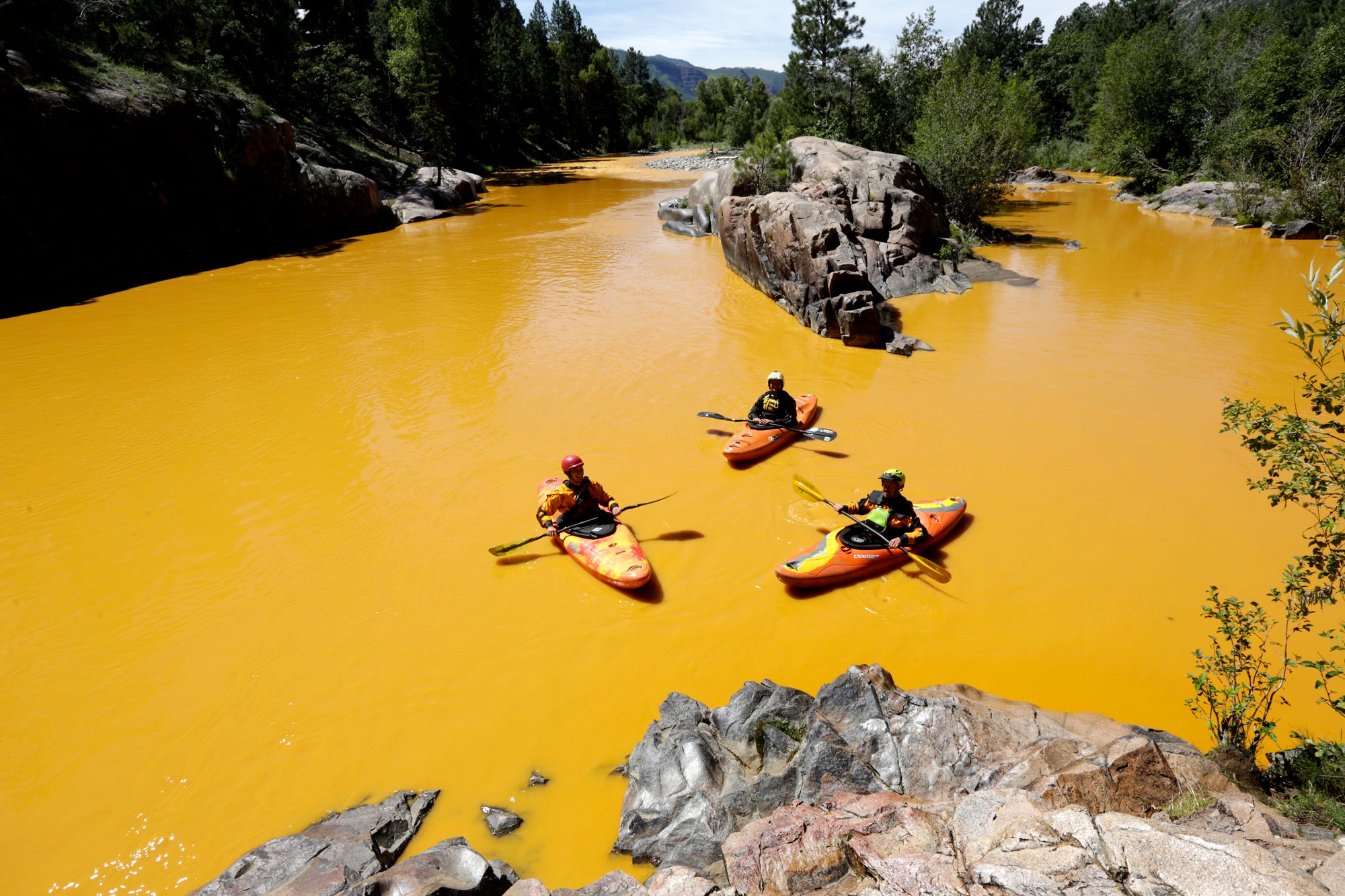As River Runs Orange, Mining Industry Attacks Tool to Prevent Toxic Spills
The National Mining Association fights to make it impossible for the Interior Department to wield an important environmental protection tool: putting large areas of public land off-limits to mining.

This page was published 10 years ago. Find the latest on Earthjustice’s work.
The images are frightening, surreal, sickening. A spill of polluted water from a closed gold mine turned the blue Animas River in Colorado’s southwest corner a vomit orange hue last week.
And while initial tests seemed to show fish could weather the hugely increased levels of toxic metals in the bright plume, the spill immediately dealt a body-blow to communities in the Four Corners region. Many communities, including the Navajo Nation, couldn’t drink the water and were desperately searching for alternate water sources. Rafting companies and anglers—both important to the local economy in and around Durango, Colo.—were ordered off the river. Without safe irrigation water, many farmers crops may dry up.
As High Country News’ Jonathan Thompson put it in his excellent article:
The Animas River courses through the middle of Durango, provides a portion of its drinking and irrigation water, and over the last few decades has become the recreational and aesthetic, wild, green heart of the city. The spill essentially stopped the heart’s beat.
And it may be years, if not decades, before the long-term impacts to the health of the Animas and the people and wildlife who use it are known.
The immediate cause of the spill was a botched effort by the EPA to shore up a dam holding polluted water from the inactive Gold King mine. Enter politicians attacking the EPA’s slow response and poor communications.
Some criticism of the EPA was deserved. And the agency still has a lot of work to do to ensure that people and businesses get the help they need to recover from this disaster.
But it’s important to remember that bashing the EPA won’t fix the bigger issue. The agency was not the ultimate cause of the pollution. It was the mining industry, which has a rich tradition of walking away from its messes. The Colorado River watershed is home to hundreds of abandoned mine sites, many of which are ticking toxic time bombs because they haven’t been properly cleaned up or reclaimed.
There’s a lot that could be done to address mine pollution. One long-discussed way to reduce the huge number of potential mine pollution accidents is to pass legislation that shields from liability the “good Samaritans” who take over mine sites to clean them up.
The best approach, though, is always prevention; that is, restricting damaging mining in areas where mining poses a threat to watersheds, wildlife and people.
But as the mass of orange water makes its way from the Animas, to the San Juan and then to the Colorado River, the National Mining Association is fighting in court to make it impossible for the federal government to wield one of its more powerful tools to prevent future mining pollution.
That tool is called a mineral “withdrawal.” Under current law, the Secretary of the Interior has the power to place public land more than 5,000 acres in size off-limits to new mining claims areas for 20 years. In the past decade, the secretary has used that power to protect habitat for bighorn sheep, desert tortoise and antelope, to safeguard rivers, and to put the brakes on uranium mining around Grand Canyon National Park.
But in a lawsuit challenging the Grand Canyon withdrawal, the mining industry argues that the legal provision giving the Interior secretary authority to withdraw large areas from mining is unconstitutional. It’s an argument that Earthjustice helped defeat in federal district court in Arizona. But the industry continues to fight to gut the Interior Department’s authority in an appeal to the Ninth Circuit in San Francisco. We’ll be filing our brief opposing the industry association early next month.
The stakes are huge, as the spill in the Las Animas underscores. If the mining industry succeeds in gutting the secretary’s withdrawal authority, it will be impossible for the Interior Department to put large areas off limits to new mining claims for more than a few years, whatever pollution or environmental damage new mining may cause. And so it will become more difficult to prevent future spills.
Because no matter how modern the mining industry’s methods are today, accidents can happen. And, as we were reminded last week, they almost always do.
Established in 1993, Earthjustice's Northern Rockies Office, located in Bozeman, Mont., protects the region's irreplaceable natural resources by safeguarding sensitive wildlife species and their habitats and challenging harmful coal and industrial gas developments.